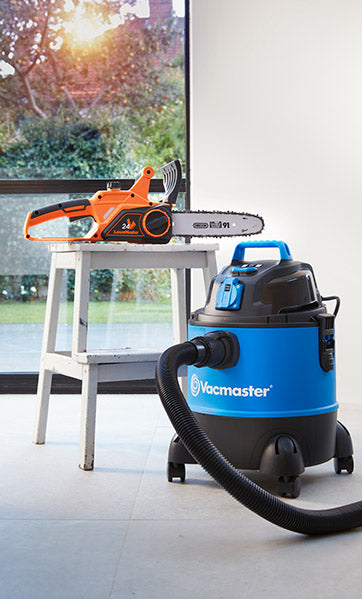-
Free Next Day Delivery
-
Buy Direct from the Makers
-
UK Customer Support
Lawnmowers – How to Mow Long Grass
3 Min Read
- Tips
Share

With thousands of UK households taking part in ‘No Mow May’, this article provides expert advice around how to mow long grass when the time comes for your next cut.
‘No Mow May’ is a popular scheme set up by leading nature charity Plantlife to encourage UK gardeners to keep their lawnmower in the shed during May, and to let wild plants thrive, providing valuable nectar for insects.
Towards the end of May, participants are encouraged to complete the ‘Every Flower Counts’ survey to report on the flower varieties that they find, and then to leave their grass slightly longer throughout the summer months.
Cutting long grass can be challenging, putting additional strain on a lawnmower. Here’s some tips from the experts at LawnMaster® for mowing long grass:
Choose the ‘right’ lawnmower
As a general rule, bigger and more powerful lawnmowers, like the LawnMaster 48V 41cm Cordless Lawnmower, are better suited to mowing longer grass.
Some LawnMaster® mowers, like the LawnMaster 1800W 40cm Electric Lawnmower, include T-Drive™ which automatically adjusts the blade speed to cope with the demands of longer grass.
If your lawnmower has a small deck, a low voltage battery, is old or already showing signs of significant wear and tear, consider replacing it prior to cutting long grass.
Pro Tip: If you have a cordless mower, you may notice that the battery power reduces quicker when mowing longer grass. This is normal. Always make sure that you fully charge the battery prior to use and consider purchasing a spare battery for use as needed.
Sharpen the blade
Lawnmowers use a blade that rotates at high-speed to cut the grass.
Start by ensuring that the blade of your lawnmower is secure, sharp and damage-free. This will help it to cut cleanly through each blade of grass, leaving a consistent and neat finish.
If the blade is loose, blunt or damaged, this may result in the mower struggling to cut through the longer grass, damaging the grass or causing the mower to cut out during operation.
Pro Tip: If the tips of grass turn brown or look ragged after you’ve mown the lawn, this is a sign that you need to sharpen or replace your blade.
Use a higher cut setting (and then reduce this in stages)
When mowing longer grass it is important that you use a higher cut setting to start with. You can then reduce this down in stages on each pass until you reach your desired grass length. To protect your mower and to get the best lawn results, we recommend that you never cut more than half the height of the grass at a time.
Mowing long grass on too short a setting can lead to an inconsistent cut, poor collection performance and vastly reduced battery run time. It also puts additional strain on the lawnmower which may cause it to overheat, cut out, or cause drive belt breakage.
Pro Tip: It’s important to understand any signs of strain from your lawnmower and to take action early to prevent damage. This includes listening to the mower, how it feels during use, any reduction in collection performance and any strange smells.
Use a grass trimmer prior to mowing
Alongside edging and trimming, grass trimmers like the popular LawnMaster 24V Grass Trimmer are great at cutting through thick grass.
Simply run the grass trimmer over your lawn, concentrating on areas of particularly thick growth and hard to reach places. Then follow up with the lawnmower.
Using a grass trimmer in this way will leave the cut grass on the lawn, but this will be picked up or mulched by the mower as it goes over it.
Reduce the width of your cutting pathways
When cutting long grass, consider halving the width of your cutting path by overlapping each pass.
Doing this reduces the amount of grass that’s cut each pass, placing less resistance on the blade, and leading to a more consistent cut. It can also prevent the mower getting clogged up with the cut grass.
Empty the collection bag more often
Grass collection bags fill quickly when mowing long grass, and blockages in the collection chute from a full grass box can impact negatively on run time for cordless mowers and cause many machines to stall or overheat.
Keep checking your collection bag fill level regularly as you mow, look out for any blockages and consider emptying more often. All LawnMaster® mowers come with either a handy indicator that closes when the grass box is full, or a translucent grass box which makes it easy to see when the grass box needs emptying.
Pro Tip: You may find it more convenient to use a mulching plug when mowing longer grass. This finely chops the mown grass, returning it to the lawn’s surface on discharge which acts as a natural fertiliser for the lawn. Remember not to cut grass down by more than a third of its total length when mulching. Gradually reducing the height of cut over more than one pass is recommended if the grass is very long.
For more expert advice, along with offers, sign up to our mailing list using the link in the footer.
